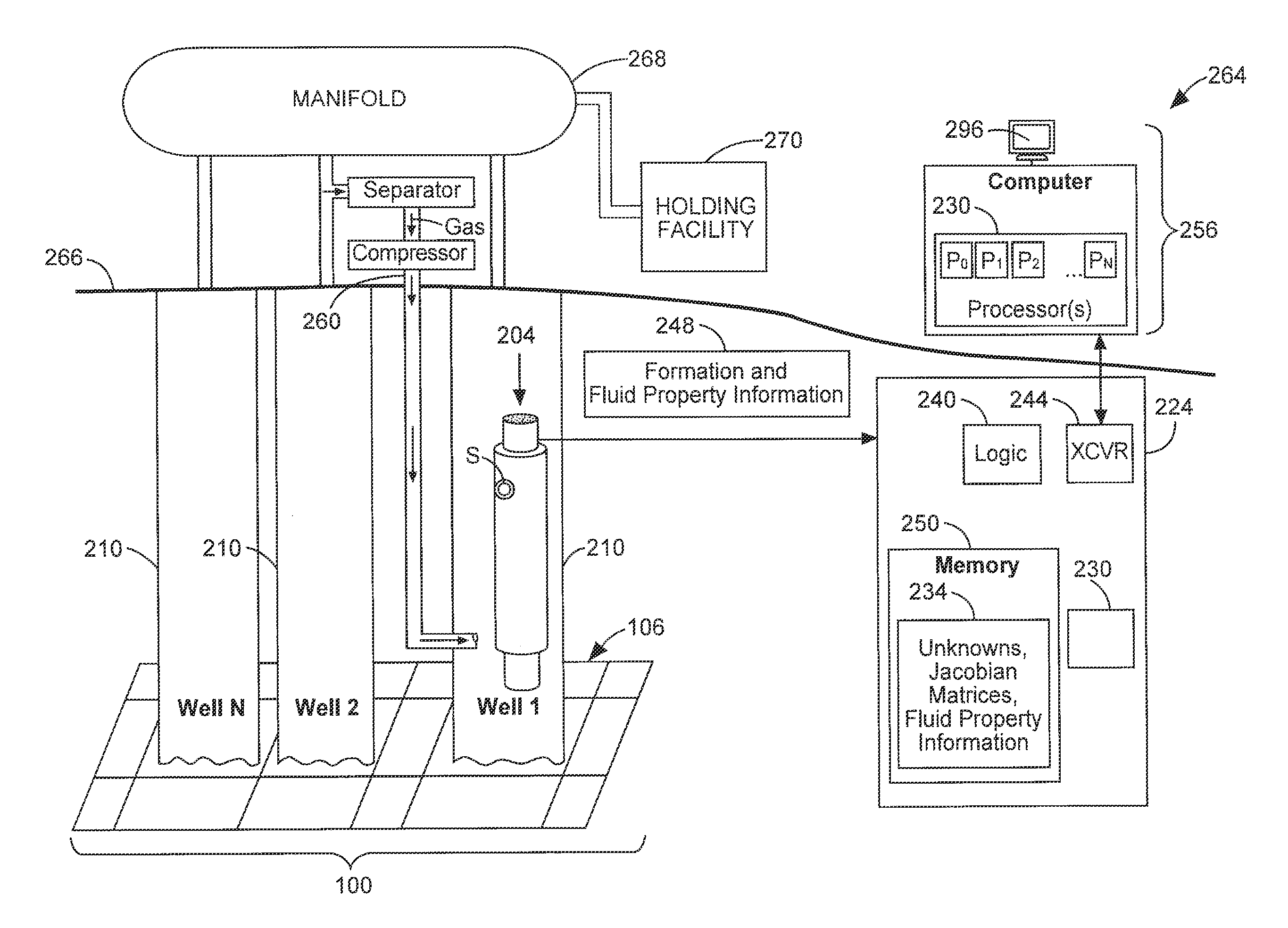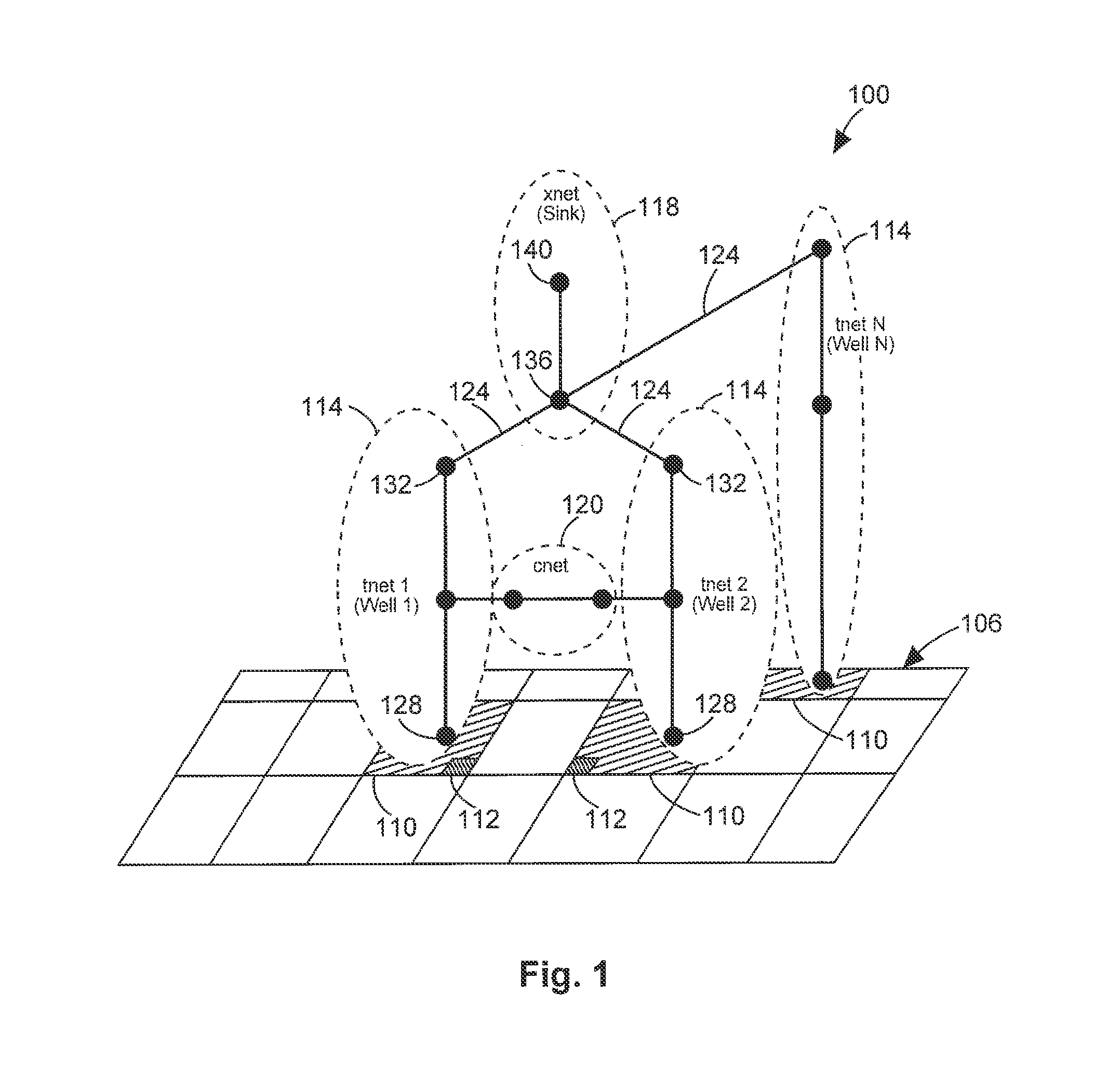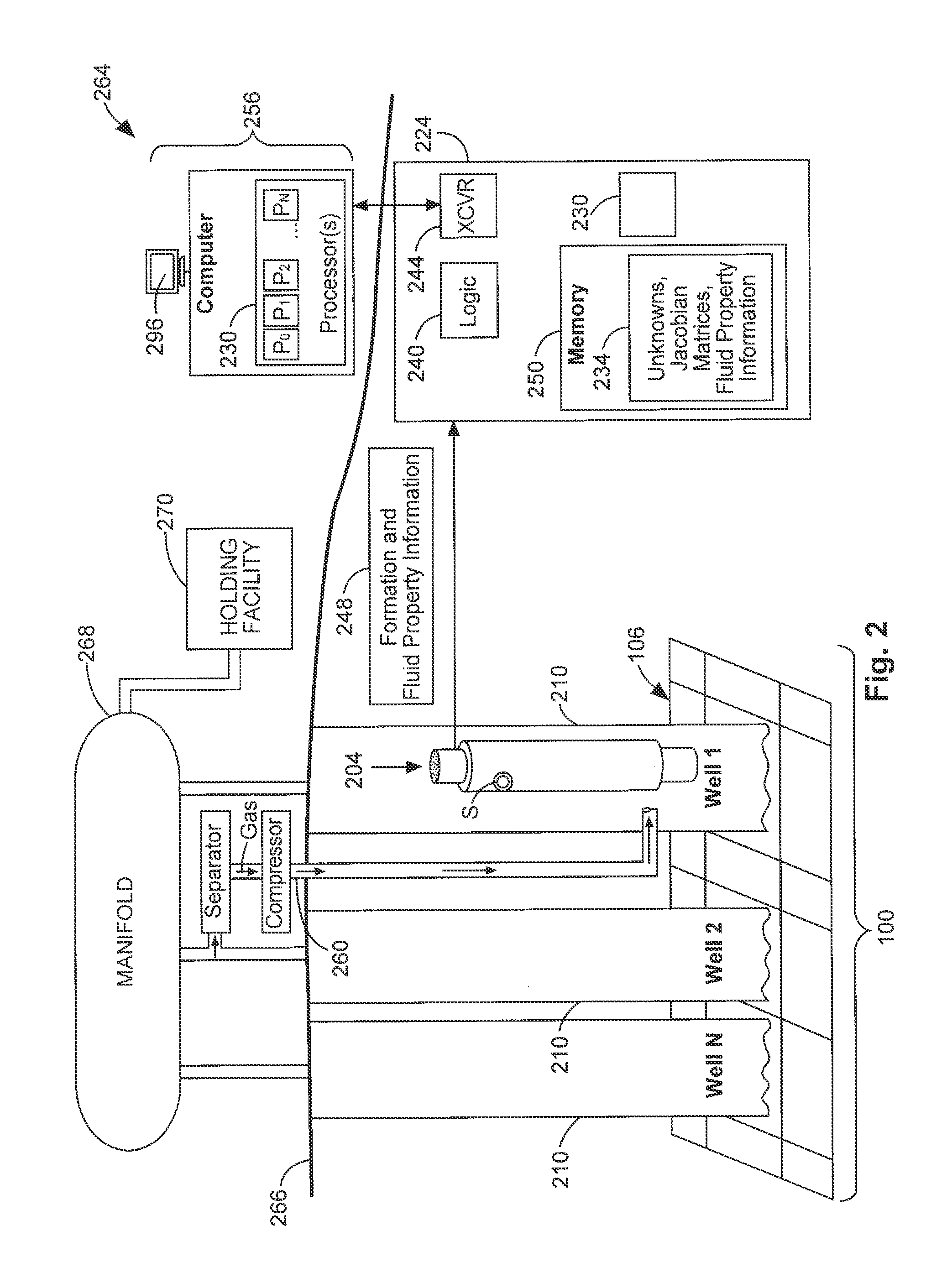Parallel network simulation apparatus, methods, and systems
a network simulation and network simulation technology, applied in the field of parallel network simulation apparatus, methods, and systems, can solve the problems of parallel scalability, decrease in the cpu time of individual processors and the elapsed time spent on reservoir grid computations accordingly, and the cpu time for network simulation remains relatively constan
- Summary
- Abstract
- Description
- Claims
- Application Information
AI Technical Summary
Benefits of technology
Problems solved by technology
Method used
Image
Examples
Embodiment Construction
[0010]Fluid flow rates, fluid compositions, and pressure distributions within a network of sub-surface wells can be simulated using numerical models. Thus, the solution of the models can be used to provide a behavioral simulation of the reservoir grid, coupled to a network of the wells and related surface facilities.
[0011]To provide better scaling and speed up simulation performance, the apparatus, systems, and methods described herein are used to solve the entire network numerical model in parallel, so that the CPU time of individual processors and the total elapsed time of network simulation can be reduced when compared to traditional sequential simulation. In this way, true parallel scalability of the overall reservoir-network simulation can be achieved. A more detailed description of the inventive mechanism used in some embodiments will now be provided.
[0012]FIG. 1 is a diagram of a network 100 of sub-surface wells (Well1, Well2, . . . , WellN) and at least one surface facility ...
PUM
 Login to View More
Login to View More Abstract
Description
Claims
Application Information
 Login to View More
Login to View More - R&D
- Intellectual Property
- Life Sciences
- Materials
- Tech Scout
- Unparalleled Data Quality
- Higher Quality Content
- 60% Fewer Hallucinations
Browse by: Latest US Patents, China's latest patents, Technical Efficacy Thesaurus, Application Domain, Technology Topic, Popular Technical Reports.
© 2025 PatSnap. All rights reserved.Legal|Privacy policy|Modern Slavery Act Transparency Statement|Sitemap|About US| Contact US: help@patsnap.com



